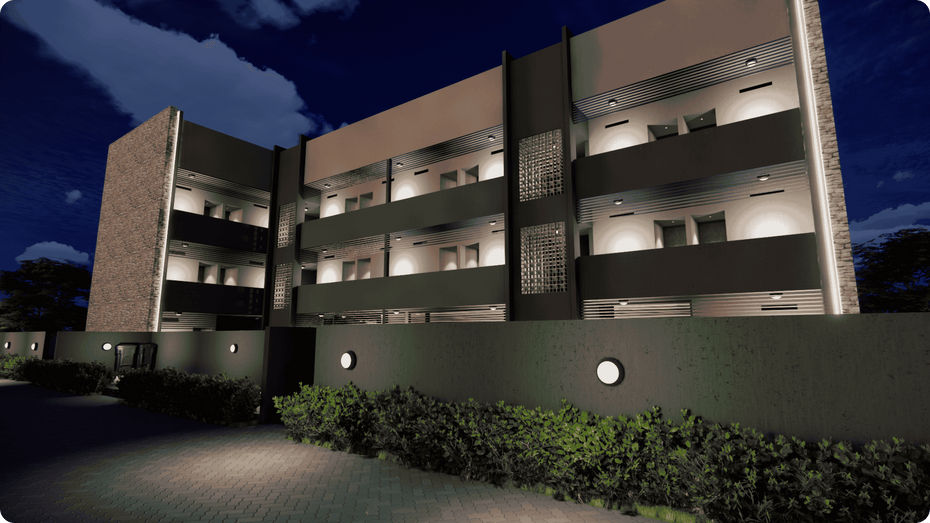Did you know?
We can custom manufacture to your specifications

LED bulkheads offer energy efficiency, durability, and versatility, making them ideal for both indoor and outdoor environments. These lights provide cost savings, a long lifespan, and uniform lighting to enhance visibility.
- Perfect for dry indoor areas such as corridors, stairwells, and office spaces, providing bright, even illumination.
- Designed for dusty, damp, or semi-exposed locations like warehouses, parking garages, and outdoor paths, offering waterproof and dustproof protection for consistent performance.
With dimming functionality, emergency backup, and wireless control, LED bulkheads deliver flexible, efficient lighting solutions for various applications.

LED bulkheads are significantly more energy-efficient compared to traditional lighting solutions like incandescent or fluorescent fixtures due to several key factors:
Lower Power Consumption: LEDs use less energy to produce the same amount of light as traditional bulbs. While an incandescent bulb may consume 60 watts to emit a certain brightness, an LED bulkhead may only consume 10–15 watts for the same output. This results in substantial energy savings over time.
Longer Lifespan: LED bulkheads have a much longer lifespan—typically 25,000 to 50,000 hours—compared to traditional bulbs that might only last around 1,000 to 2,000 hours. This reduces the frequency of replacements, which not only saves money but also reduces waste.
Minimal Heat Emission: Unlike incandescent lights, which convert a significant amount of energy into heat, LED bulkheads emit very little heat. This means less energy is wasted, and the lighting system remains cooler, which can help reduce cooling costs in a space.
Instant Brightness: LED bulkheads provide full brightness instantly, unlike fluorescent bulbs that require a warm-up period. This immediate efficiency improves energy usage and reduces unnecessary power consumption.
Integration with Smart Controls: Many LED bulkheads are compatible with motion sensors, dimming controls, and daylight sensors, optimizing energy use by ensuring lights are only on when needed.
Motion sensors in LED bulkheads are a highly effective way to reduce energy consumption by ensuring that lights are only on when necessary. This intelligent technology detects movement within a designated area and activates the lighting accordingly, preventing unnecessary energy waste in unoccupied spaces.
Automatic Lighting Control: In large commercial or industrial settings, spaces such as hallways, warehouses, or storage rooms may often be left vacant. Without motion sensors, these areas would remain unnecessarily lit. However, with motion sensors, the lights will only turn on when movement is detected, and once the area is no longer occupied, they automatically switch off, ensuring energy is not wasted.
Customizable Settings: Motion sensors in LED bulkheads typically feature adjustable settings for sensitivity and time delay. This flexibility allows businesses to fine-tune the lighting system to ensure energy efficiency while still providing sufficient illumination when necessary.
Optimizing LED Efficiency: LED bulkheads are inherently more energy-efficient than traditional lighting sources. When paired with motion sensors, this efficiency is further optimized, dramatically reducing unnecessary power consumption and lowering electricity bills.
Reducing Operational Costs and Carbon Footprint: By reducing the time lights are on, motion sensors contribute to lower operational costs and a smaller carbon footprint—supporting sustainability goals and eco-conscious practices.
In conclusion, motion sensors in LED bulkheads provide an efficient, cost-effective solution to optimize lighting usage, minimize energy consumption, and contribute to a greener, more sustainable lighting strategy.
When selecting lighting solutions for commercial and industrial spaces, the lifespan of the lighting system is a crucial factor to consider. LED bulkheads are known for their impressive longevity, which significantly outperforms traditional lighting options such as incandescent and fluorescent bulbs.
LED Bulkheads Lifespan: LED bulkheads typically have a lifespan of 50,000 to 100,000 hours, depending on the quality of the fixture and operating conditions. This translates to about 5 to 10 years of continuous use, or longer with intermittent usage.
Traditional Lighting Lifespan:
Traditional lighting degrades faster due to fragility, heat, and inefficiency, often requiring more frequent replacements and maintenance.
Benefits of Longer Lifespan: Lower maintenance costs, less waste, and consistent energy efficiency. Fewer replacements mean reduced disruptions and lower overall costs.
In conclusion, LED bulkheads far surpass traditional lighting options in lifespan, making them the ideal choice for environments where consistent, long-term performance is essential—delivering durability, cost savings, and environmental benefits.
The Lighting warehouse